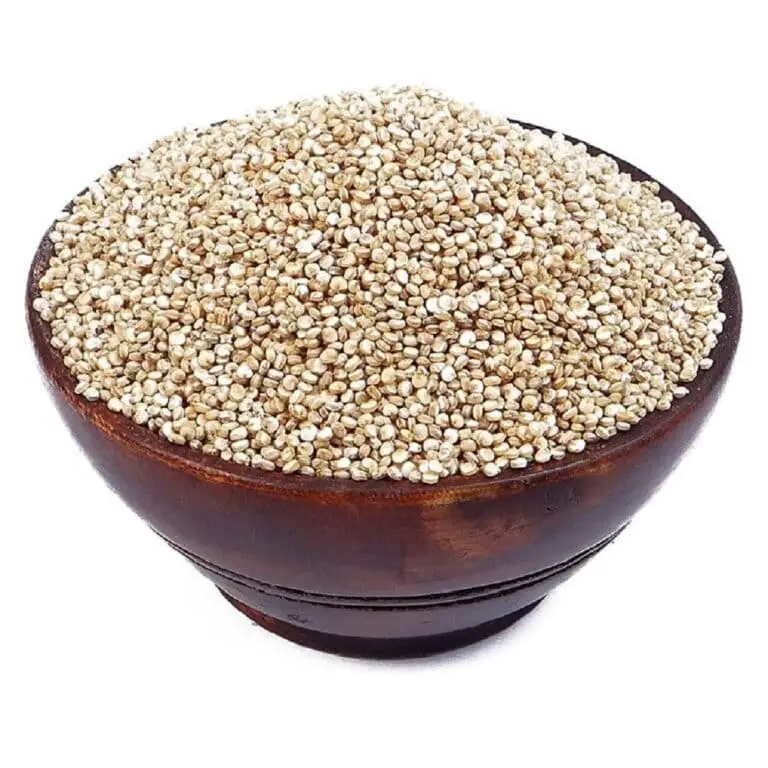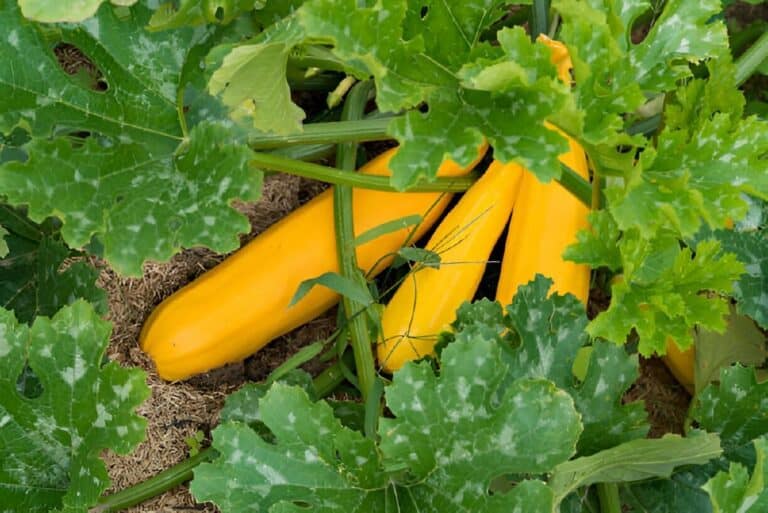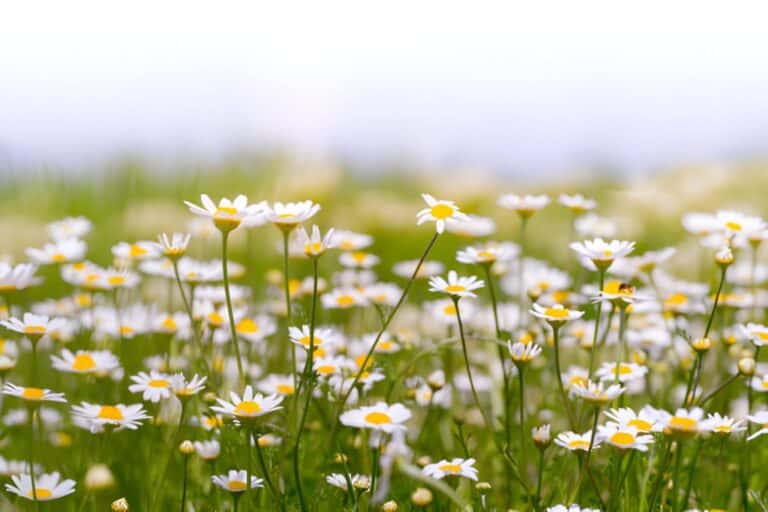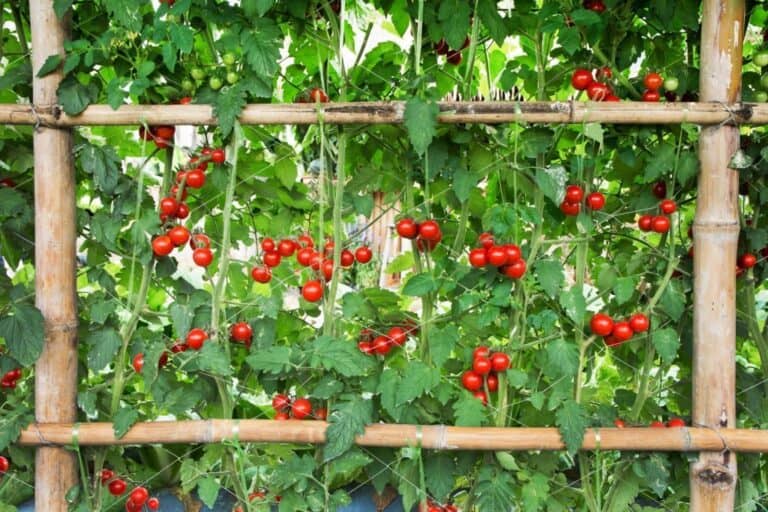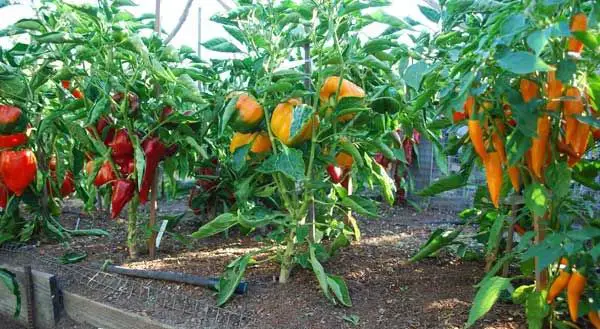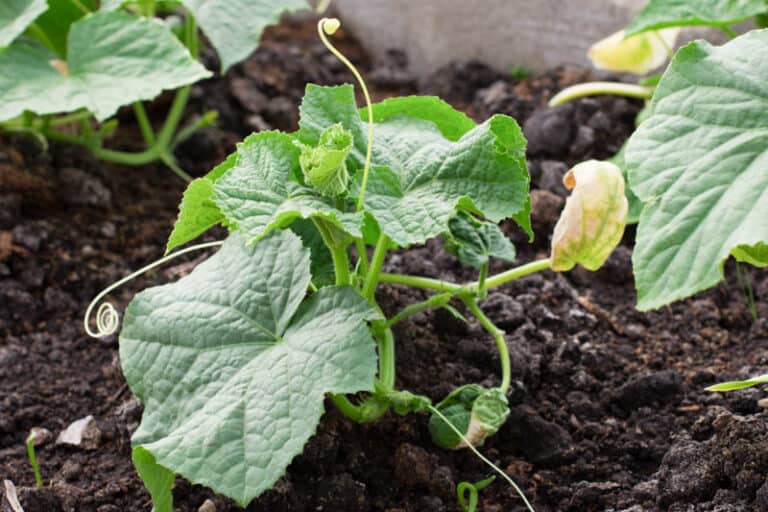Are Cantaloupes Self Pollinating? How to Hand-Pollinate Cantaloupes Plant
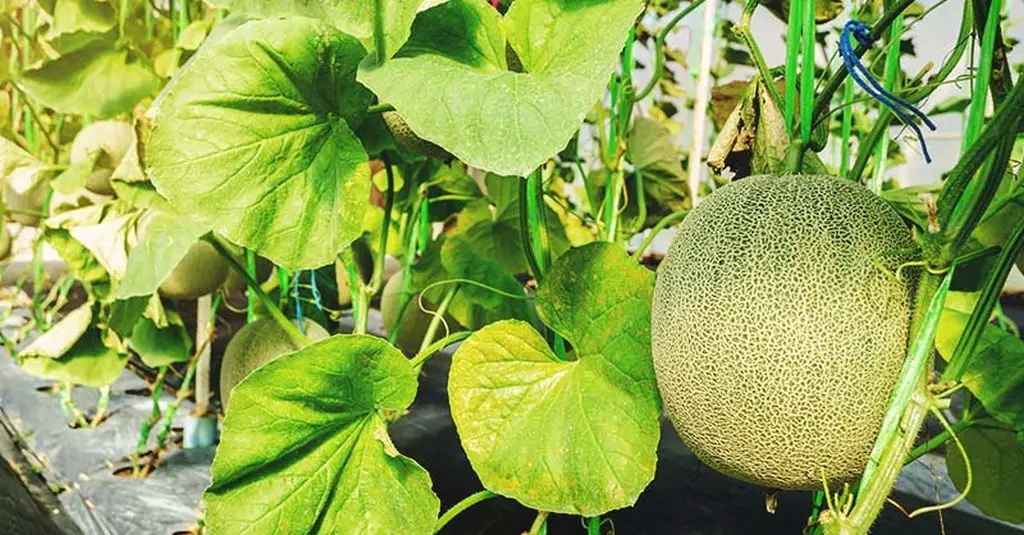
Cantaloupes, with their sweet and succulent flavor, are a delight of the summer harvest. Perhaps, as a grower, you may have the question lingering: are cantaloupes self-pollinating?
Yes, cantaloupes can be self-pollinating, but they may also require pollinators like bees to ensure successful pollination. Hand pollination can also be done to increase the chances of fruit production. Both male and female flowers need to be present for pollination to occur.
In this article, we embark on a journey through the intricate world of cantaloupe pollination. We will explore the natural processes and discover how to hand-pollinate these delicious fruits for a bountiful yield. We’ll learn the secrets that turn tiny blossoms into the luscious fruits we eagerly await.
The Cantaloupe Pollination Basic
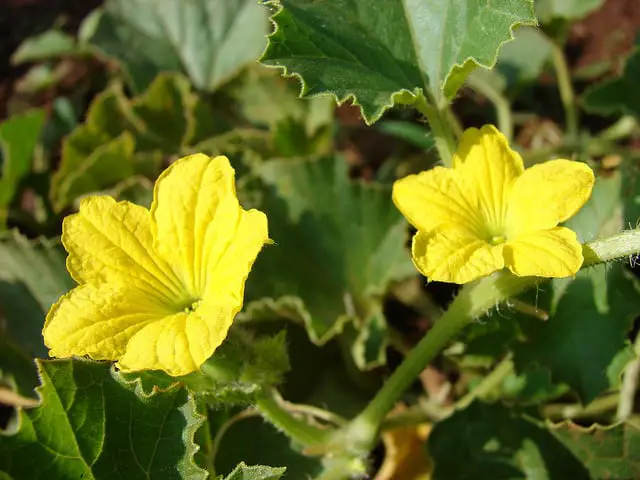
Cantaloupes, cucumbers, pumpkins, squash, and watermelons are vining plants. They depend on pollination to produce fruit. Understanding cantaloupe pollination begins with a closer look at the biology of these plants.
The male flower on the cantaloupe plant has an open stalk in the center of the flower called a stamen. Male blossoms appear a few days earlier than female blossoms, so pollinating insects have time to habituate themselves to visiting the vines.
While some plants are self-pollinating, cantaloupes typically rely on external factors for successful pollination. Their flowers contain both male and female reproductive organs, but the transfer of pollen often requires a little help.
To unravel the mysteries of cantaloupe pollination, let’s dive into the fascinating biology of these plants. Cantaloupes usually look beyond themselves for a successful pollination dance. Unlike some self-sufficient plants,. Within the intricate design of their flowers lies a crucial detail: both male and female reproductive organs coexist.
Key Features of Cantaloupe Pollination:
- Dual Reproductive Organs:
- Cantaloupe flowers possess both male and female parts.
- This dual setup sets the stage for potential self-pollination, but nature’s touch can enhance the process.
- Cantaloupe flowers possess both male and female parts.
- External Assistance Required:
- Despite their self-pollination potential, cantaloupes often benefit from external assistance.
- Factors like wind, insects, or human intervention can aid in the transfer of pollen.
- Despite their self-pollination potential, cantaloupes often benefit from external assistance.
- Intervention with Hand-Pollination
- When nature needs a nudge, gardeners can step in with hand-pollination. This manual process ensures the transfer of pollen, safeguarding a fruitful harvest.
- When nature needs a nudge, gardeners can step in with hand-pollination. This manual process ensures the transfer of pollen, safeguarding a fruitful harvest.
Specific Cantaloupes Varieties Known for Being Self-Pollinating
Cantaloupes, like many plants, have the ability to self-pollinate under certain conditions. The presence of both male and female organs within the same flower allows for self-pollination. External factors often enhance the process.
Some cantaloupe’s varieties stand out for their remarkable self-pollinating abilities. These unique cultivars take charge of their reproductive destiny, minimizing their dependence on external pollinators. Let’s explore the fascinating traits of these self-sufficient cantaloupe varieties:
1. Ambrosia: Known for its heavenly sweetness, Ambrosia is not just a delight for the taste buds but also a self-pollinating wonder. Its compact size and vibrant orange flesh make it a favorite among home gardeners.
2. Athena: A Greek goddess among cantaloupes, Athena boasts both flavor and self-sufficiency. This variety thrives in various climates and rewards gardeners with consistent, homegrown sweetness.
3. Honey Rock: As the name suggests, Honey Rock is a sweet, self-pollinating gem. Its small to medium size makes it an ideal choice for smaller garden spaces, where it can independently set its fruits.
4. Sarah’s Choice: Named after the wise choice it offers gardeners, Sarah’s Choice is not only delicious but also a reliable self-pollinator. With a well-balanced flavor profile, it’s an excellent addition to any cantaloupe patch.
Consider these varieties for a hassle-free gardening experience in your quest for self-sustaining cantaloupes. Growing your own delicious cantaloupes is a joy. Cultivating these self-pollinating gems adds a touch of simplicity.
Is Your Cantaloupe in Need of Hand-Pollination?
Cantaloupes generally exhibit signs indicating the need for hand-pollination. To identify if intervention is required, start by observing the behavior of pollinators around your garden. If there’s a scarcity of bees or other natural pollinators, it’s a signal that hand-pollination could be beneficial.
Another key factor is the presence of deformed or underdeveloped fruits. If you notice misshapen or smaller-than-expected cantaloupes, inadequate pollination may be the culprit. Keep an eye on the flowering patterns as well; limited blooms or an imbalance between male and female flowers can hinder natural pollination.
Key Signs Your Cantaloupe May Need Hand-Pollination:
- Low Pollinator Activity: Bees and other pollinators are scarce in the vicinity.
- Deformed or Undersized Fruits: Cantaloupes are not reaching their full size or are misshapen.
- Imbalanced Flowering: Unequal numbers of male and female flowers cantaloupe, hindering natural pollination.
- Unfavorable Weather Conditions: Adverse weather, such as heavy rain or extreme heat, can impede pollinator activity, necessitating manual intervention.
- Proximity Matters: The proximity of cantaloupe plants influences pollination success. Planting cantaloupes too far apart may hinder natural pollination.
If you identify one or more of these signs, it’s a cue to step in and hand-pollinate. This ensures optimal fruit set and a bountiful harvest from your cantaloupe plants.
| Also see: Does Cantaloupe Grow on Trees? |
How to Hand-Pollinate Cantaloupes Plant (Step-by-Step Guide)
Follow these simple steps to hand-pollinate your cantaloupes effectively:
- Identify Male and Female Flowers: Distinguish between male and female flowers by noting the presence of a small fruit behind the female flower.
- Collect Pollen: Gently brush the male flower’s anthers to collect pollen. Use a small brush or cotton swab for precision. You must retrieve pollen from the male’s stamen each and every time before you attempt to transfer it to the female flower.
- Transfer Pollen to Female Flower: Carefully transfer the collected pollen to the stigma of the female flower. Ensure thorough coverage for successful pollination.
- Repeat as Needed: If your cantaloupe plants have multiple flowers, repeat the process to maximize pollination.
The Pros and Cons of Hand-Pollination
Let’s delve into the pros and cons of this hands-on pollination approach, offering a nuanced perspective for cultivators.
Pros:
- Ensures Fruit Set: Hand-pollination increases the chances of fruit set, especially in the absence of natural pollinators.
- Precision Control: Gardeners have control over the pollination process, ensuring a higher success rate.
Cons:
- Time-Consuming: Hand-pollination can be time-consuming, especially in large gardens with numerous cantaloupe plants.
- Dependency on Gardener: Natural pollination relies on external factors, while hand-pollination depends on the gardener’s intervention.
Understanding Cantaloupe Cross-Pollination
Indeed, cantaloupes engage in cross-pollination with other melon varieties. This could lead to unique and unexpected fruit characteristics. This botanical rendezvous happens when pollinators, like bees, carry pollen from one type of melon flower to another. This results in a blending of genetic traits.
Impact on Genetic Makeup
Cross-pollination can influence the genetic makeup of cantaloupes and their melon counterparts. For growers meticulously cultivating specific melon varieties, maintaining genetic purity becomes paramount. Unplanned cross-pollination may introduce unforeseen traits, altering the taste, size, or appearance of the fruits.
Preventing Cross-Pollination
Growers practicing precise melon cultivation can employ isolation techniques to minimize the chances of cross-pollination. This involves physically separating different melon varieties, either through distance or barriers, to ensure that each plant remains true to its genetic lineage.
Considerations for Melon Growers
Those who grow melons must understand cross-pollination to maintain specific varieties. It is crucial for maintaining their integrity. Careful planning, observation, and strategic planting practices can contribute to a thriving melon harvest with distinct and desired characteristics.
Can Watermelon and Cantaloupe Cross-Pollinate?
The fascinating world of melons brings forth a common inquiry: can watermelon and cantaloupe cross-pollinate? The answer lies in the intricate dynamics of melon varieties and their pollination mechanisms. Let’s dive into this horticultural curiosity.
Understanding Cross-Pollination:
- Botanical Differences: Watermelon (Citrullus lanatus) and cantaloupe (Cucumis melo) belong to different botanical families, reducing the likelihood of natural cross-pollination.
- Insect-Mediated Cross-Pollination: While rare, cross-pollination can occur if bees or other pollinators transfer pollen between melon flowers.
Factors Influencing Cross-Pollination:
- Proximity: Planting watermelon and cantaloupe in close proximity increases the chance of cross-pollination.
- Timing: Melons planted at the same time are more likely to cross-pollinate.
Preventing Cross-Pollination:
- Isolation: Separate watermelon and cantaloupe plants by a considerable distance.
- Timing Planting: Stagger planting times to minimize flowering overlap.
Conclusion: In the vast melon patch, the prospect of watermelon-cantaloupe cross-pollination is intriguing but generally minimal. By understanding the botanical nuances and implementing preventive measures, you can enjoy a harmonious melon harvest without the unexpected blending of flavors.
Tips for Successful Cantaloupe Cultivation
Cultivating cantaloupes is more than just gardening; it’s a journey into the realm of taste and harvest. Enhance your cantaloupe cultivation experience with these tips:
- Plant Variety Selection: Choose cantaloupe varieties with characteristics conducive to your local climate and growing conditions.
- Optimal Spacing: Ensure proper spacing between cantaloupe plants to facilitate natural pollination.
- Provide Adequate Water: Cantaloupes thrive in well-drained soil with consistent moisture. Adequate watering supports healthy plant growth and flowering.
- Fertilize Appropriately: Use a balanced fertilizer to provide essential nutrients for robust plant development.
- Monitor Pollinator Activity: Keep an eye on pollinator activity in your garden and take action if necessary.
These tips are the essence of a successful cantaloupe cultivation journey. From the initial seed to the joyous harvest, each step contributes to the symphony of flavors that will soon grace your table. Happy cultivating!
Conclusion
In conclusion, the question “Are Cantaloupes Self-Pollinating?” reveals the intricacies of cantaloupe reproduction. While cantaloupes produce perfect flowers, their reliance on self-pollination is not foolproof. To ensure a bountiful harvest, knowing how to hand-pollinate becomes essential. This is especially true when there isn’t enough pollination, there are problems with root knot nematodes, or there aren’t any honey bees around.
Hand pollination is a reliable method. It involves using a small paintbrush to transfer viable pollen from a male flower’s stamen to the stigma of a female flower. This meticulous process helps set fruit, preventing the disappointment of a lack of cantaloupe fruit due to unsuccessful pollination. For gardeners facing challenges such as a lack of honey bee pollination, the time-consuming yet effective act of hand-pollination becomes a valuable skill.
For those tending to cantaloupes in their garden bed, recognizing the flowering habit and distinguishing between male and female flowers is crucial. The slip from the vine is an indicator of ripeness, emphasizing the importance of timely hand-pollination.
By keeping the plants evenly moist and understanding the nuances of the cantaloupe’s reproductive cycle, growers can overcome the hurdles of insufficient pollination and stop seeds from forming prematurely.
Essentially, using hand-pollinating tips, like transferring pollen with a paintbrush, ensures that even Cucurbitaceae family varieties, such as honeydew, can set fruit without only depending on bee pollination. With careful attention and the right techniques, gardeners can navigate potential challenges, guaranteeing a fruitful harvest of delectable cantaloupes.
FAQs
Can cantaloupes pollinate themselves naturally?
Cantaloupes have some degree of self-pollination, but factors like weather and environmental conditions may impact the success rate. Hand-pollination can be a reliable method to enhance fruit set.
What are the signs of successful cantaloupe pollination?
Successful cantaloupe pollination is indicated by changes in flower appearance, including wilting petals. Developing fruits should exhibit steady growth, and you may notice a sweet aroma near well-pollinated flowers.
Do cantaloupes require cross-pollination for optimal fruit production?
While cantaloupes can self-pollinate, cross-pollination can enhance genetic diversity and potentially improve fruit quality. However, hand-pollination provides a controlled and effective alternative.
What challenges are associated with self-pollination in cantaloupes?
Challenges include variable success rates, environmental factors, and limited genetic diversity. Hand-pollination mitigates these challenges, offering growers more control over the pollination process.
What methods are effective for cantaloupe pollination?
Effective pollination methods for cantaloupes include natural pollination by bees, but for increased control, hand-pollination is recommended. This involves manually transferring pollen from male to female flowers using a brush or similar tool.
Why is cross-pollination in cantaloupes beneficial?
Cross-pollination introduces genetic diversity, potentially improving fruit quality and resistance to diseases. However, for growers seeking precise control over the pollination process, hand-pollination provides a reliable alternative.

